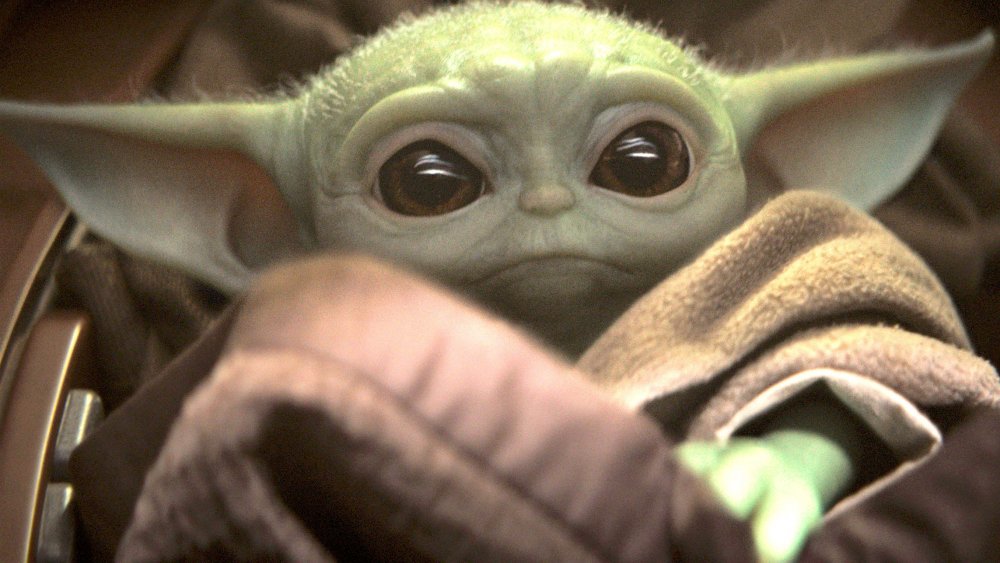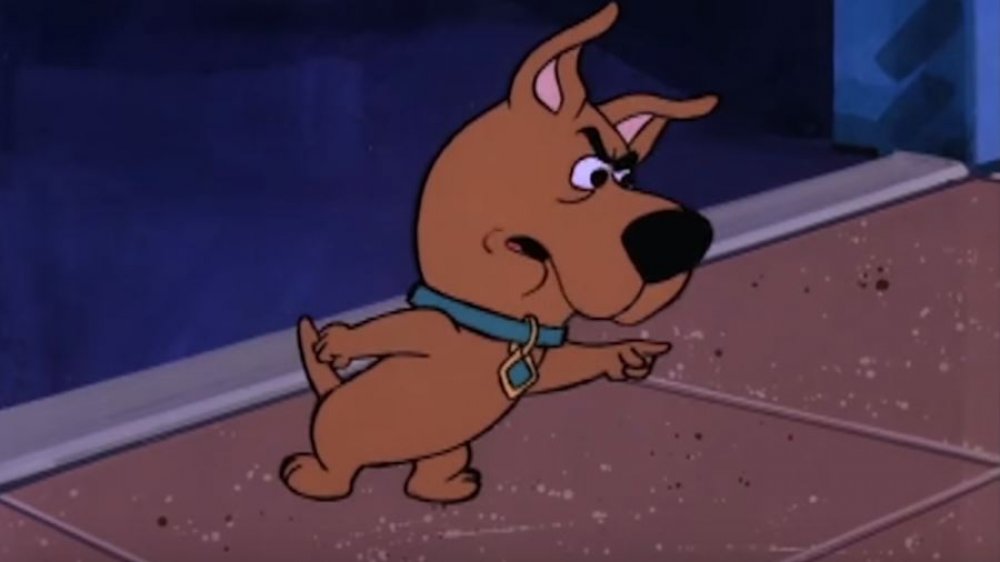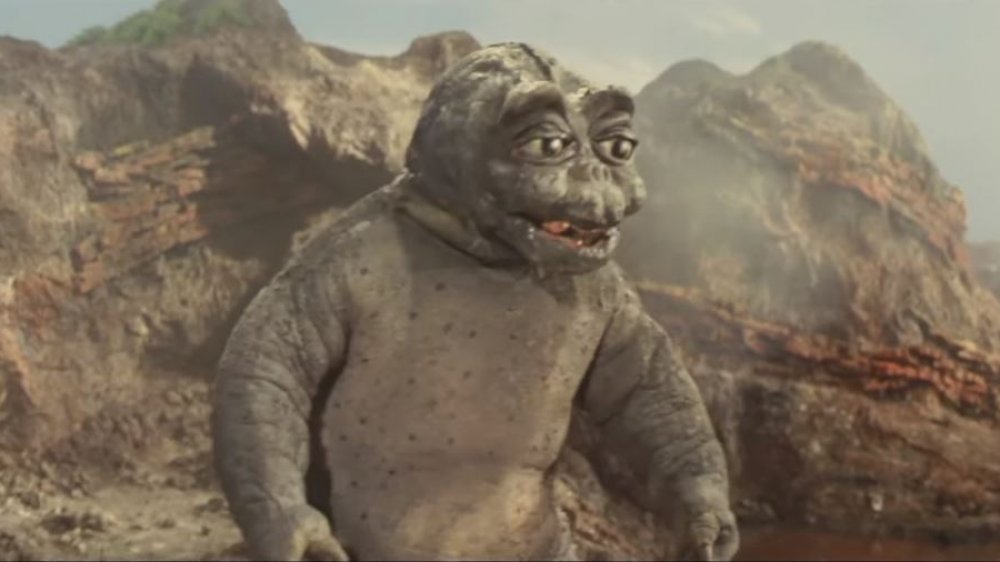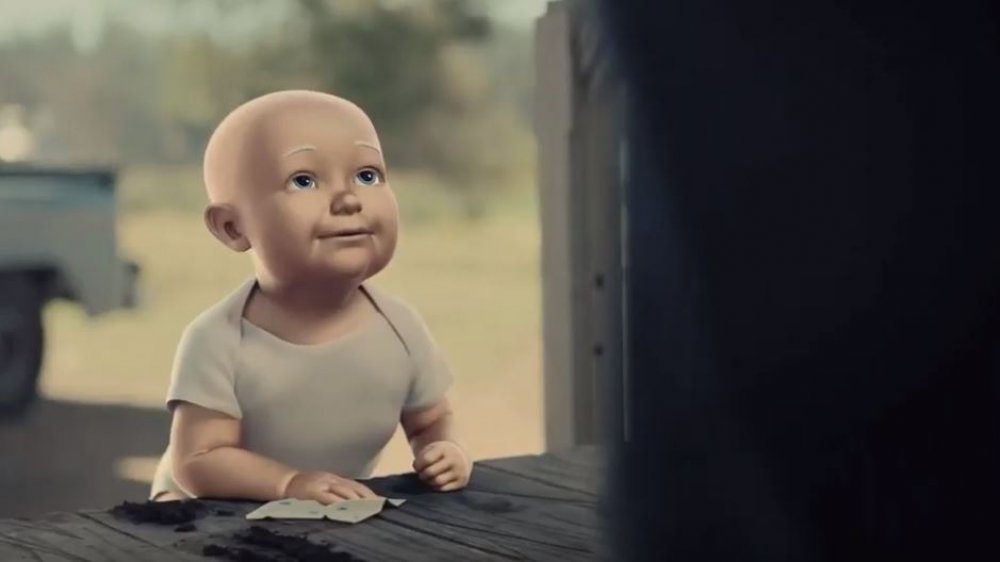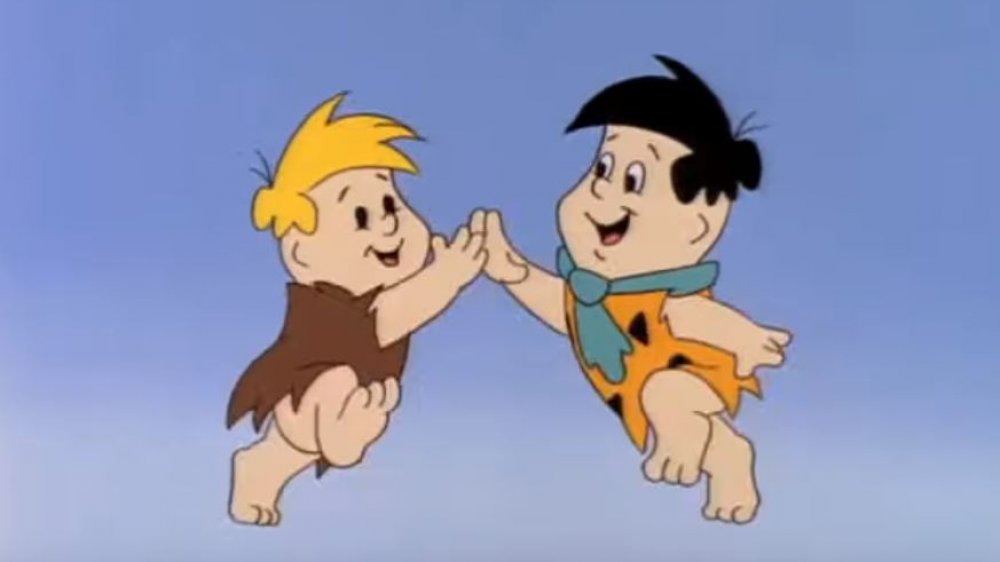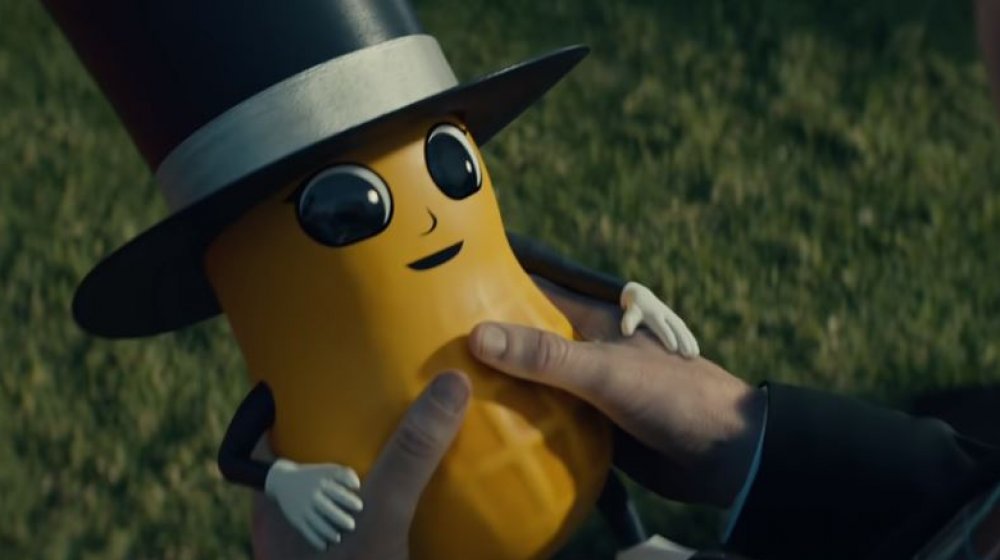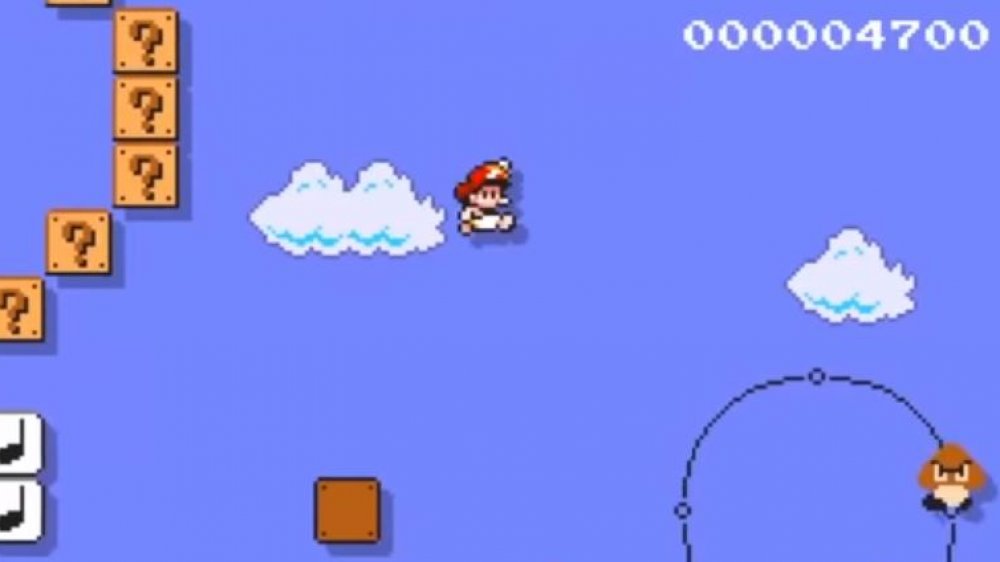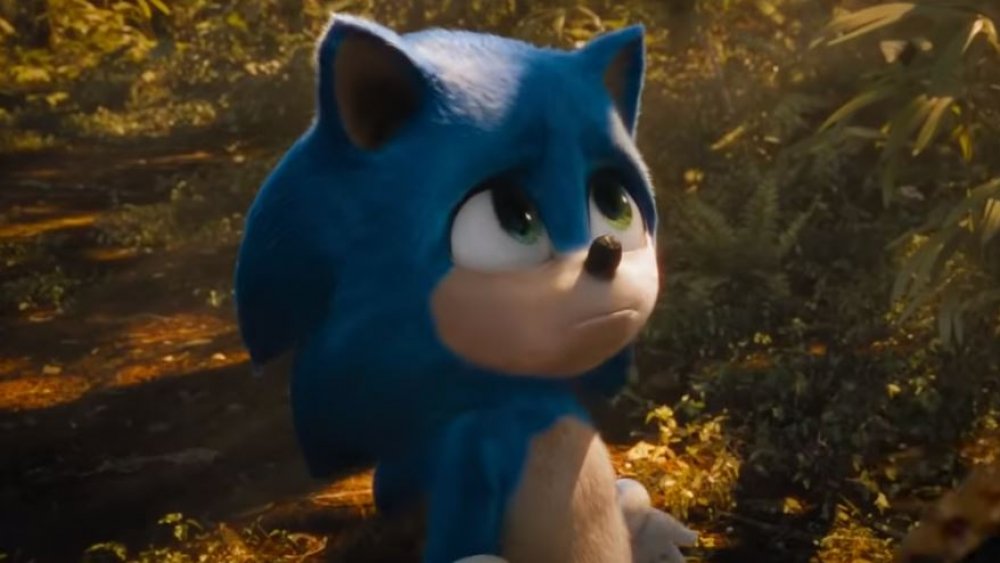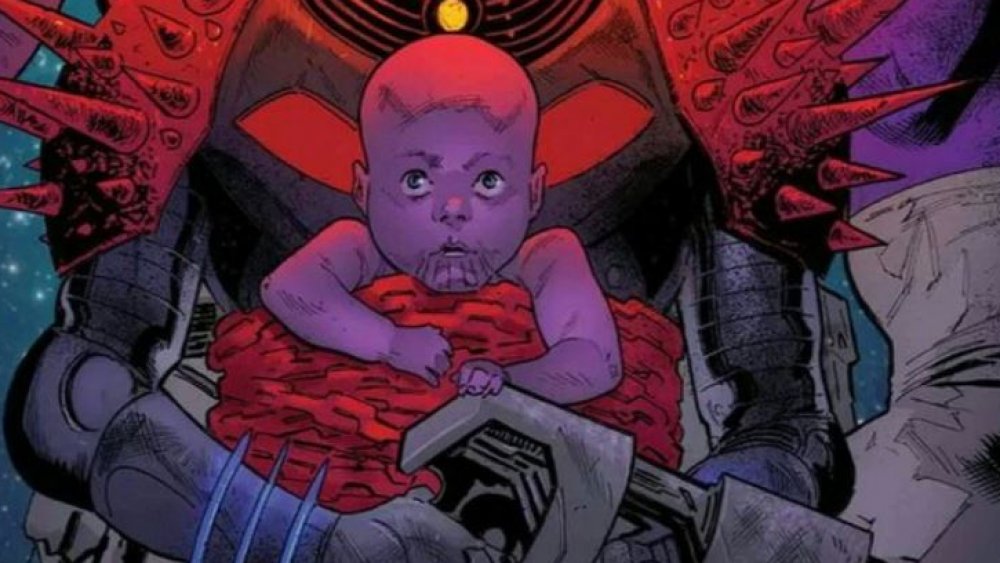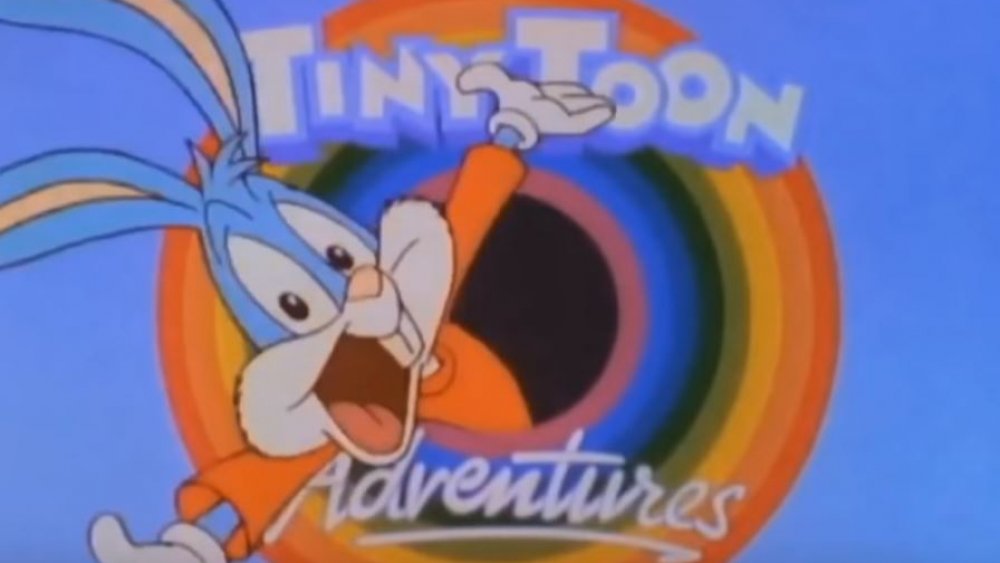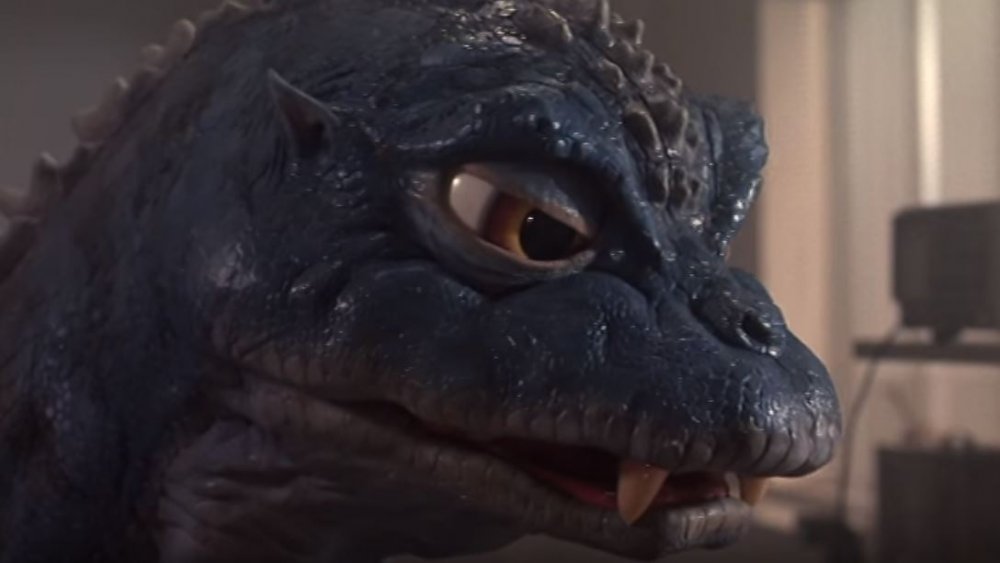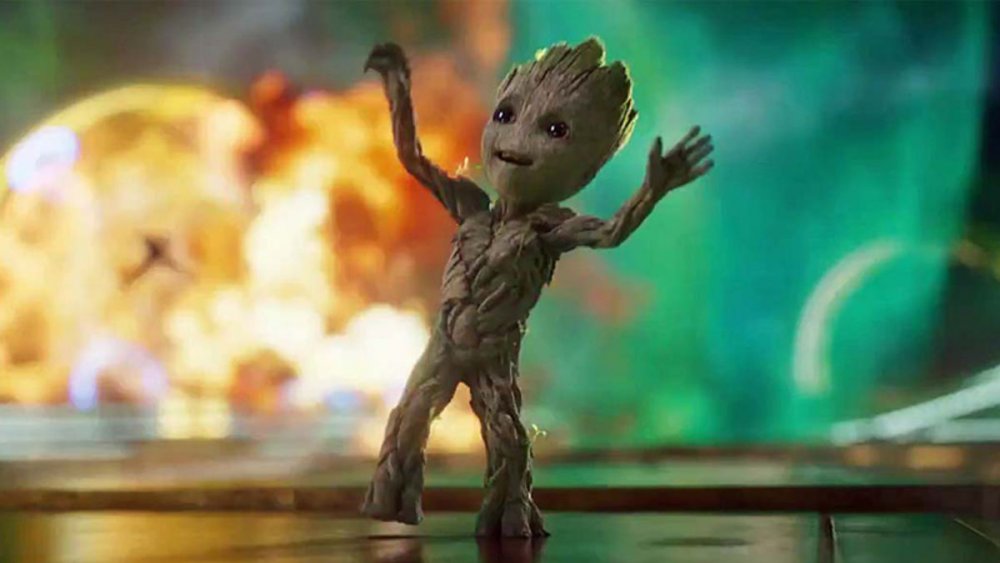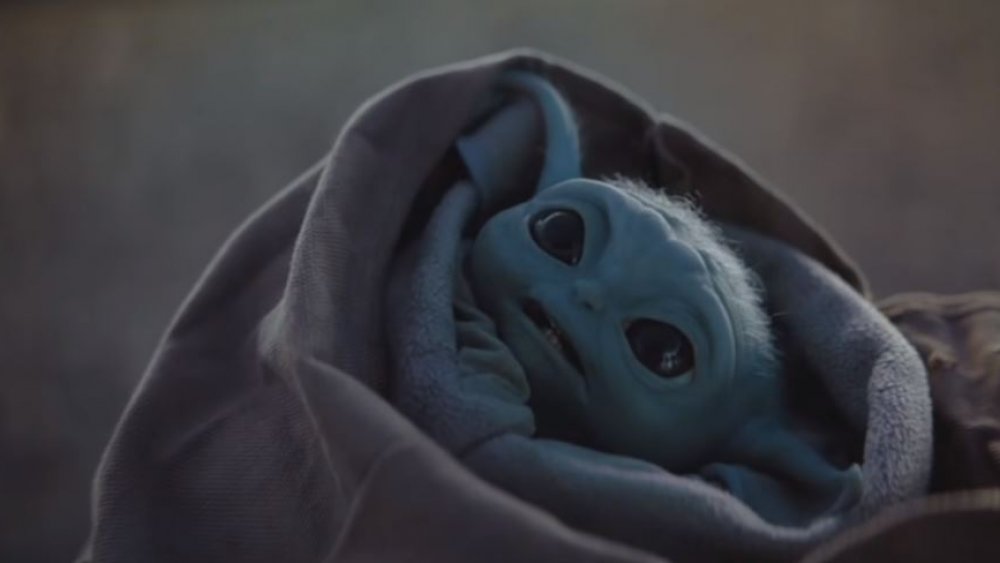Pop Culture Babies Ranked Worst To Best
These days, streaming is in, pop culture phenomenons are bigger than ever, and all of your favorite adult characters have ... uh, been turned into babies?
It's strange but true. Maybe it's because Millennials, now in their 30s, are starting to have kids. Or maybe it's just that Baby Yoda is really that adorable. Who knows? Either way, you can't deny that the surge in baby (or kiddified) versions of major characters has now become a genuine trend, even though it's also quite true that infantile versions of cinematic, TV, and comic heroes have been popping up for decades.
However, not all fictional babies are created equal, and for every cute little tree sapling that dances around with the Guardians of the Galaxy, there's also a creepy, young corporate mascot coming around to give you freakish nightmares. Here are the biggest pop culture baby versions of normally adult characters, ranked from worst to best.
Puppy Power ... is the worst, sorry
Throughout the decades, there have been plenty of baby versions of popular characters. And none of them, not a single one, have grated on everybody's collective nerves like Scrappy-Doo.
Dogs are great, and Scooby-Doo is classic, but don't pretend for one second that you liked this obnoxious little puppy version of him. Even today, in a world so horrifyingly polarized, everyone can come together and agree that Scrappy-Doo sucks. YouTube has whole video analyses about it. TV Tropes has an entire page dedicated to what they call "the Scrappy" trope, defined as fictional characters who develop a universal hatedom. It's hard to pinpoint exactly what makes Scrappy so annoying, but it's probably got something to do with how he feels like such a cheap effort to pander to little kids, combined with the groaning repetitiveness of catchphrases like "lemme at 'em!" And to make matters worse, Scrappy's overbearing presence altered the entire dynamic of the gang, like a tyrannical little bully who dominates a classroom. In fact, not long after Scrappy came around, as The Guardian points out, the central trio of Fred, Velma, and Daphne were given the boot. Why? To make more room for Scrappy's antics, of course. Joy.
These days, thankfully, Scrappy's been kept in the doghouse. His last major appearance, which occurred in the 2002 live action Scooby-Doo flick written by James Gunn, was significant mainly because it finally acknowledged the character's obnoxiousness.
Minilla, the son Godzilla won't talk about
Believe it or not, Godzilla started out as a dark allegory for the bombing of Hiroshima and Nagasaki, and his 1954 debut was a surprisingly effective horror movie. By the '60s, though, the Big G's popularity had progressively led to the character becoming increasingly ludicrous, a transition which finally reached its apex with the introduction of the original baby Godzilla, an annoying little squirt named Minilla.
Now, babies are inherently adorable. It's not outlandish to presume a baby Godzilla would also be adorable. Minilla, though, was a step too far. When this kid wasn't busy wasting the Big G's time by jumping on his tail, the so-called son of Godzilla was instead freaking everyone out with arguably the worst, cheapest, most wrongheaded costume design of any kaiju ever. Seriously, just one look at that smiling, human-faced kid will tell you that, despite what everyone is claiming, he can't possibly be related to Godzilla. Frankly, it's hard to believe he's even supposed to be part of the same dinosaur species.
Of course, as old school cartoon fans (and SyFy Wire) may recall, Minilla also inspired the equally silly "Godzooky," who appeared in Hanna-Barbera's Godzilla Power Hour. Say what you will about Godzooky and his flapping wings, but he was a lot more tolerable than Minilla.
Baby Mr. Clean comes from another world
Of all the characters you might've wanted to see a cute baby version of, Mr. Clean was probably not one of them. Sure, the dude seems likable enough, what with being a buff, bald guy who really loves scrubbing your windows, but did you really want to know his epic, world-traveling backstory or see him trying to fit in with other kids?
Well, too bad, because a 2013 commercial brought Mr. Clean's origin story to life, and ... well, the infamous "uncanny valley" is horrifyingly deep. The story begins, of course, with a baby Mr. Clean turning up, without explanation, in rural America, a la the Superman myth. His adopted parents first discover him as a cartoon baby scrubbing off their front porch. Why? Because that's his life mission, you know — to clean things. Fair enough. Everyone could probably use a Mr. Clean in their life, but there's just something terrifyingly unnerving about how much Baby Mr. Clean looks like an adult trapped in an infant body or some kind of bad CGI android from the early '90s. As Buzzfeed said, "Young Mr. Clean is creepy as all get-out," and honestly, there's no better way to say it. Sorry, buddy.
The Flintstones Kids want to warn you about the dangers of drugs
C'mon, guys. It's time to come clean. Did anyone — anyone — actually enjoy that '80s children's TV show trend of taking a popular cartoon, morphing all the classic characters into little kids, and pretending that the whole thing is some kind of weird prequel?
Yeah, didn't think so. From A Pup Named Scooby-Doo to Tom & Jerry Kids Show, these programs were pandering at its finest, to the point where even the kids watching them knew they were being pandered to. Probably the worst offender? The Flintstones Kids, which presumed to show Fred, Wilma, Barney, and Betty as a toddler squad, demonstrating that even the most clever Honeymooners tribute can only be stretched so far before it collapses in on itself.
The Flintstones Kids really hit rock bottom with the special public service episode "Just Say No." This "war on drugs"-era weirdness was masterminded by Nancy Reagan, as explained by US Campaign, and it presents the baby cave people learning about why it's so important to say no to drugs, no matter how cool they might look, while also attending a concert thrown by Michael Jackson. Whoops, sorry, Michael Jackstone. Now, there's certainly nothing wrong with talking to kids about drugs and helping them overcome peer pressure, but it's hard to imagine that this silly cartoon would've convinced even the most impressionable child.
Mr. Peanut is dead — long live ... Baby Nut?
In case you haven't been following corporate advertising campaigns like they're your favorite soap operas, you might be surprised to learn that a certain snobby, bourgeoisie legume named Mr. Peanut is dead. No, really. They killed him off. In January 2020, as reported by Entertainment Weekly, a commercial depicted Mr. Peanut driving with his buddies Wesley Snipes and Matt Walsh (you can't make this stuff up), when suddenly, due to a tragic automobile accident, the mascot sacrificed his life to save the two celebrities.
Once everyone recovered from the shock, it was announced that Mr. Peanut's funeral would air as a Super Bowl commercial, and it did. In this bizarre piece of advertising, Snipes says the obituary. Mr. Clean is in attendance. So is the Kool-Aid Man, who cries crocodile tears upon Peanut's grave, one of which gets into the soil and causes a plant to grow that gives birth to ... uh, Baby Nut. Yeah. Pretty weird, but at least he's a cute little fella. According to Buzzfeed, People had mixed feelings about the almost ludicrously awkward name choice of "Baby Nut," as you may imagine. And on The A.V. Club, it's been pointed out how badly the whole thing reeks of an attempt to cash-in on the Baby Yoda phenomenon, to say nothing of Baby Nut's annoying Twitter feed. The original commercial is certainly amusingly surreal, but Planters might want to be careful about taking this joke too far.
It's a-me, Baby Mario
What makes Baby Mario any different from grownup Mario? These days, who knows, since he's been turned into just a smaller, diapered version of Mario who gets up to the same general activities as the adult Mario, minus the mustache. Over the years, Baby Mario (and, yes, Baby Luigi) have shown themselves capable of doing everything from playing tennis to playing baseball, when they're not busting their heads on question mark bricks ... an activity which, by the way, goes from funny to terrifying when the person doing it is a baby. Jeez.
Probably the key element in Baby Mario's popularity, though, is that there's a lot of nostalgia for the days when he was a lot more innocent, helpless, and needed your protection. The character was introduced in Super Mario World 2: Yoshi's Island, as explained by Games Radar, where the whole storyline involves the heroic Yoshi carrying the defenseless baby Mario on his back, in an effort to save the infant, all while also rescuing Baby Luigi and reuniting the future heroes with their parents.
So there you have it. Yoshi's Island was basically the video game version of The Mandalorian, a few decades in advance.
Baby Sonic is the fastest little squirt around
If you know anything about the development of the 2020 live action Sonic the Hedgehog movie — other than, you know, Jim Carrey — it's that the design of the titular character went through a serious rough patch. When the first trailer came out, fans were so freaked out by the creepily humanoid portrayal of the classic video game hero, complete with human teeth, that the production made the unprecedented move of delaying the release, saying the fans were right, and completely retooling Sonic's design. Thankfully, the updated design ended up being something everybody was much happier with, and to win the good graces of fans, the "new" Sonic's reveal also included the first appearance of the so-called Baby Sonic, a lovable little creature in baby red sneakers, baby white gloves, and with big, loving green eyes.
So, Baby Sonic, to the relief of many film executives, pleased just about everybody. What do you call a baby hedgehog, though? Hedgehog Street says they're properly referred to as "hoglets," so if Baby Sonic ever gets his own spinoff, the proper title would be Sonic the Hoglet. Huh.
Baby Thanos will still snap you away
Terms like "cute kid" and "intergalactic mass murderer" don't tend to go together like peanut butter and jelly. That said, scary as Thanos might be, he must've once been a bouncy, little purple baby, right?
As you might recall, Avengers: Endgame taps into an old trope when War Machine discusses the idea of using time travel to go back and murder the young Thanos in his sleep. The team decides against this — ethical qualms aside, Hulk argues that time travel doesn't work that way — but the discussion nonetheless prompted some hilarious concept art, fan discussion, and fan theories.
However, Baby Thanos actually did appear in the comics, where the same eternal argument was answered. Sorta. According to Polygon, the 2019 alternate reality comic Cosmic Ghost Rider depicted the title character — who is actually the Punisher in this universe, because comics are confusing — going back in time to kill the purple infant. Spoiler alert: He flinches, because even Frank Castle doesn't want to murder babies. So Castle resolves to raise the baby with a better, more upstanding upbringing, hoping he grows up into a better person. Good idea, except Castle is a terrible role model, and the "new" Thanos instead turns into an equally tyrannical conqueror obsessed with punishment. Oops. Maybe it would've gone better if the father figure was Captain America?
Tiny Toons did cartoon babies right
At first glance, the baby animals in the '90s nostalgia beacon Tiny Toon Adventures might seem no better than something like, say, the Flintstone Kids, but there's a big difference. Tiny Toon Adventures took what could've been a lame concept and did it the right way. Admittedly, as pointed out by the Los Angeles Times, it probably helps that Steven Spielberg was behind the whole shebang. Regardless, as explained by Entertainment Weekly, the key difference between the Tiny Toons and most other shows that infantilize classic cartoon characters was that instead of just downsizing the classic Warner Brothers characters like Bugs, Daffy, and Yosemite Sam, the show created brand new characters that simply filled the same roles yet also had their own quirks.
For instance, Bugs Bunny's personality was split into two baby characters, Buster and Babs, one of whom embodied the zany stuff and the other being the slick one. Calamity Coyote wasn't just a childlike Wile E. Coyote, but he actually put his science whiz skills to better use instead of always chasing a roadrunner. Now, obviously, the Tiny Toons characters could never live up to the classics. However, they embodied the exact way to get this "Baby _____" trope right. Namely, these babies should be their own characters, not just a de-aged version of the grownup.
Godzilla's badass child, Godzilla Junior
No, you're not seeing double. This is another baby Godzilla. This time, though, the concept was done right. Because yes, Minilla sucks, but his replacement, Godzilla Junior, was simultaneously cute, awesome, and intimidating, even when people were feeding him flowers.
Here's the deal. Back in the '70s, the once-mighty Godzilla franchise became mired in more cheese than you could possibly spread on a cracker, Minilla just being one part of the equation. So in 1984, as explained by Den of Geek, Toho Pictures pulled a Batman Begins before Batman Begins existed, meaning they rebooted the franchise with a dark, gritty film called The Return of Godzilla (among other titles). This created a new timeline, generally dubbed the "Heisei" era by fans, where some of the sillier elements of the franchise could be recreated more seriously. And, yes, Godzilla Junior was one of those.
First introduced in 1993's Godzilla vs. Mechagodzilla II, the creature — originally named Baby Godzilla — is definitely lovable but still believably a reptile, as opposed to being a green Pillsbury Doughboy. There's a real sense that while this lizard kid might be all cool with humans today, he's still going to grow up into something a lot bigger and scarier, which made his evolution over the following films exciting to watch. By the end of the final film in the cycle, Godzilla vs. Destoroyah, Junior has become almost a full-grown Godzilla himself, with all the firepower to match. Take that, Minilla.
Baby Groot is the rock star of babies
Face it, if it wasn't for Baby Groot, this article probably wouldn't exist.
This little guy was the seed that sprouted today's wave of "pop culture babies," from Baby Yoda to Baby Nut, and it's easy to see why. After all, who could watch Baby Groot's dance at the beginning of Guardians of the Galaxy Vol. 2 and not cheer? The secret to Baby Groot's enduring success, though, is that while he's certainly cute — one villain even declares him "too adorable to kill" — the sapling also plays a significant role in the plot, the character development, and the evolution of the Guardians themselves, who transform from a ramshackle bunch of outcasts into a misfit family.
So how does he accomplish all this? For one, Baby Groot's origins stem from tragedy, as he's basically the son of the elder Groot, created when the lovable tree-man sacrificed himself to save the team in one of the saddest onscreen deaths ever. Thus, by taking care of the baby, the team is also honoring the memory of their lost friend. Two, as Vanity Fair writes, Baby Groot thrusts the other Guardians into parental roles, as they all have to frequently break away from what they're doing to take care of him. No wonder Baby Groot proved to be everybody's favorite part of the film.
You just can't beat Baby Yoda
Baby Yoda is far from the first pop culture baby, but he's certainly the most universally loved. The first time that The Mandalorian actor Werner Herzog saw the animatronic little green dude, according to GQ, he was moved to tears. So were legions of fans, who then proceeded to flood the internet with memes that, somehow, never get old. In a stunning twist, even Disney wasn't prepared for the sheer amount of love that Baby Yoda would receive, as Mental Floss explains, meaning they had to work overtime to produce merchandise for the character, while unlicensed, fan-made gear proliferated. Honestly, that just makes the whole thing even better.
As for Baby Yoda himself, though? Well, look at the guy. He's impossible not to fall in love with. As if his little blinking eyes weren't cute enough, everything from his shaky gestures to his little smile to his loving adoration for Mando seem convincingly like a real baby, to the point where you want to jump into the screen and shoot all those jerks who would ever try to harm him. Right now, the world still knows very little about Baby Yoda's origins — even his true name is a mystery, since the series merely calls him "the Child" — but his impact on pop culture is going to last for a long, long time.
